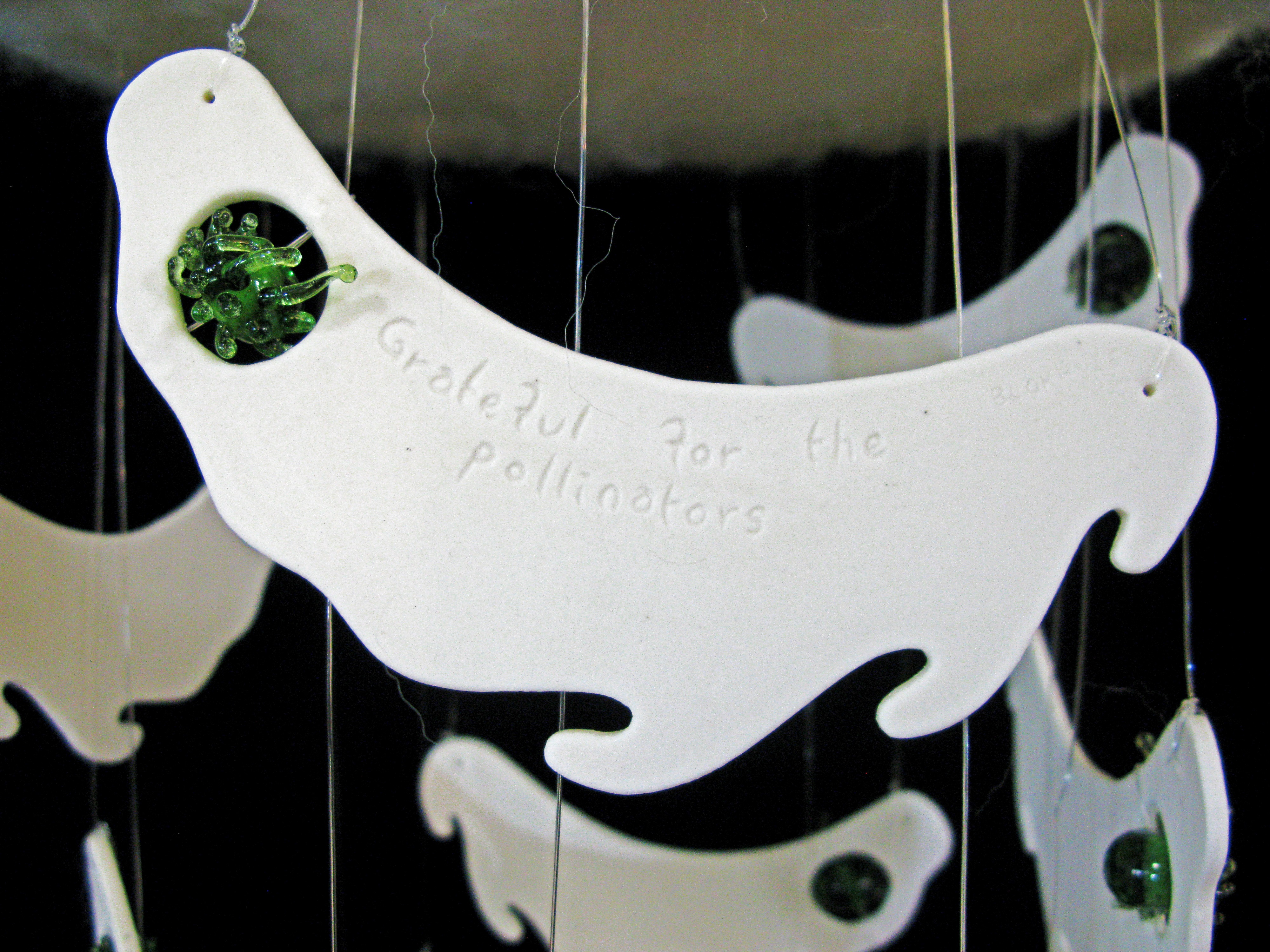Larissa Blokhuis
Discipline: Glass, ceramic, mixed-media sculpture
Next place we can see your work: Gallery Gachet, 18 May – 16 June 2018
curatorial project at Beaumont Studios from 8 – 22 June 2018
website: www.larissablokhuis.com
2233 West 4th Ave Vancity, indefinitely (public art)

1. What is art to you?
Art is the use of (a) chosen medium(s) to express new or unique ideas to the public.
2. What did you make in the past (and why)?
In 2008, I graduated from art school with a major in glass. After graduating, focusing only on glass caused me to stagnate creatively. A friend started taking me to the ceramic studio, and I started to experiment. For my 25th birthday, my parents bought me a summer course at Pilchuk Glass School. Even though it was about glass, the course helped me realize I’m an artist who blows glass, not a glassblower; I realized I could make any artwork I wanted.
I started incorporating the ceramic and other materials, and I developed my adult voice as an artist. Previous work was usually about nature/environmentalism, and using mixed media I developed the theme, “Imaginary Future Evolution.”
3. What are you making now (and why)?
I study historic plants and creatures, compare them to what I see today, and create new work that could evolve in the future. We humans have the option to work with nature, protect the environment, and preserve climate conditions in which humans can thrive. By presenting snapshots of the future, I hope to inspire curiosity about our environment and encourage people to think about their actions with long-term sustainability in mind.
In 2017, I exhibited at an eclipse-themed event, where I presented a potential beetle of the future that has a light-sensitivity. I asked participants to predict how the beetle would respond to an eclipse, and submit their ideas. I selected the winner(s), and am now working on completing this project.
My DTES grant project includes nature-related gratitudes solicited from the public.
My purpose is to highlight something that unites us – our gratitude for nature. My transition to engaging the public for feedback is designed to create more points of connection for viewers.
4. What are your hopes/plans/dreams for the future?
As an independent artist, ideally at some point I will have the option to work only as an artist. A basic income for all Canadians would make that possible. Artists often can’t rely on continually fluctuating income from sales or exhibition fees.
Arts engagement increases critical thinking abilities, empathy, brain plasticity, and has many other benefits that should get better public recognition. There is a perception of the ‘starving artist,’ or the ‘mad genius artist.’ Both stereotypes serve as an excuse to devalue artists and the work we do. I would love to see that perception changed. Practising professional artists are hardworking, thoughtful, socially engaged, and subject to all the same costs of living everyone else experiences.
I want to give paid opportunities to other artists, because I’m grateful for the opportunities I have had. In 2017 I joined Curiosity Collider Art-Science Foundation as the Exhibitions Director. We create multidisciplinary events that highlight the similarities between art and science, and we pay CARFAC rates. Since joining, I have been surprised by how many artists I meet whose work is directly connected to science, and vice-versa. My first curatorial project with the Collider is called
“Interstitial: Science Innovations by Canadian Women,” at Beaumont Studios from 8
– 22 June. Ideally with Curiosity Collider, we will be able to secure operational funding and open an art-science centre in Vancouver. Sciart is a growing movement globally, and we want to present our community as the best place for leaders in this movement.
5. What would surprise people about your creative practice?
Many people outside the arts community have no idea how much paperwork goes into being an artist. Applications for exhibitions, grants, and other opportunities, gallery and event schedules, contracts, and small business bookkeeping (including paying 50% to the gallery) among other forms of paperwork.
In terms of process, there can be an assumption that artists dream their ideas or wait until inspiration strikes. Neither of those are part of my process. Ideas are developed over time by researching topics of interest, reflecting about what I want to communicate and what I want the viewer to experience, and keeping a regular studio schedule. Coming up with ideas is a skill that I practise.
